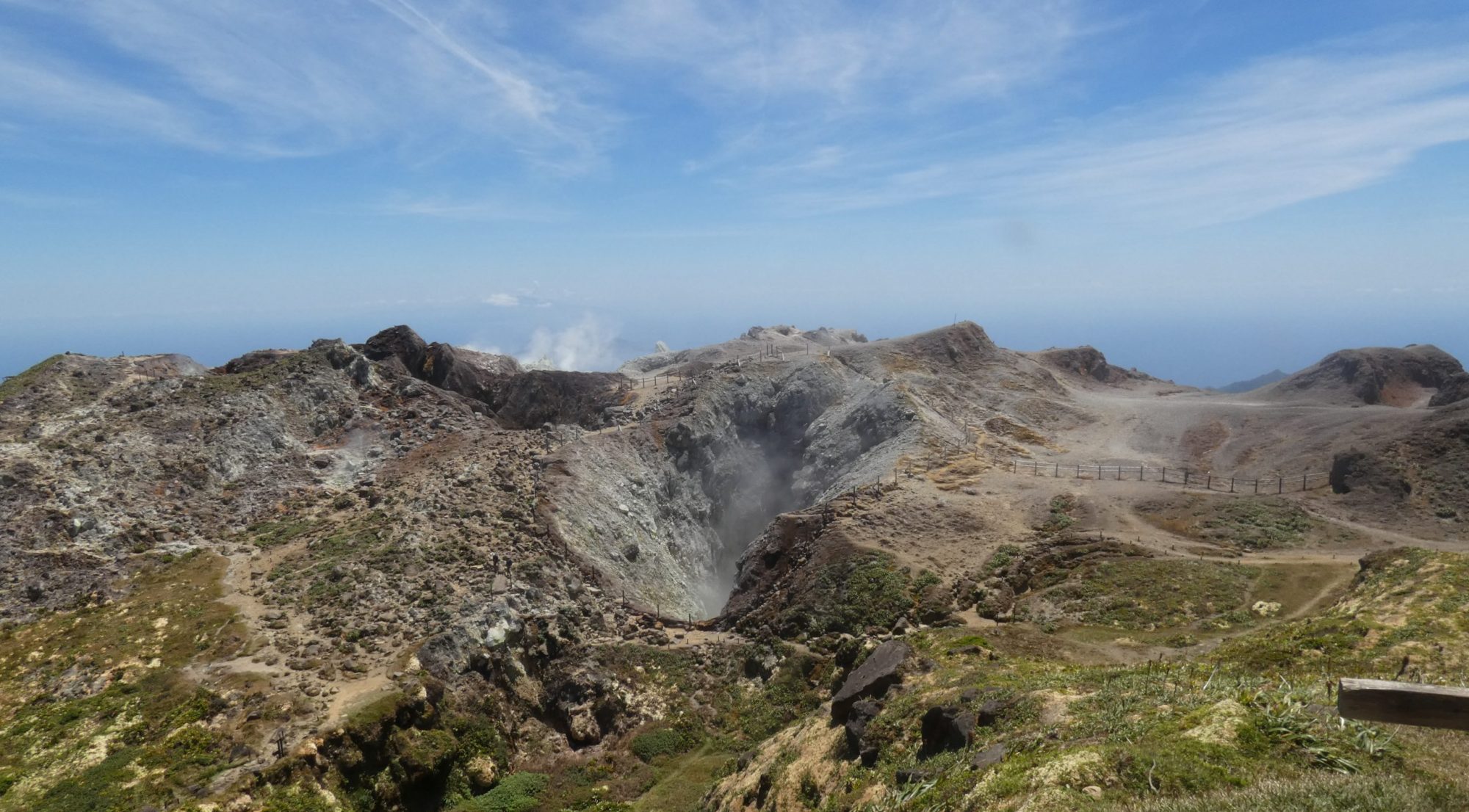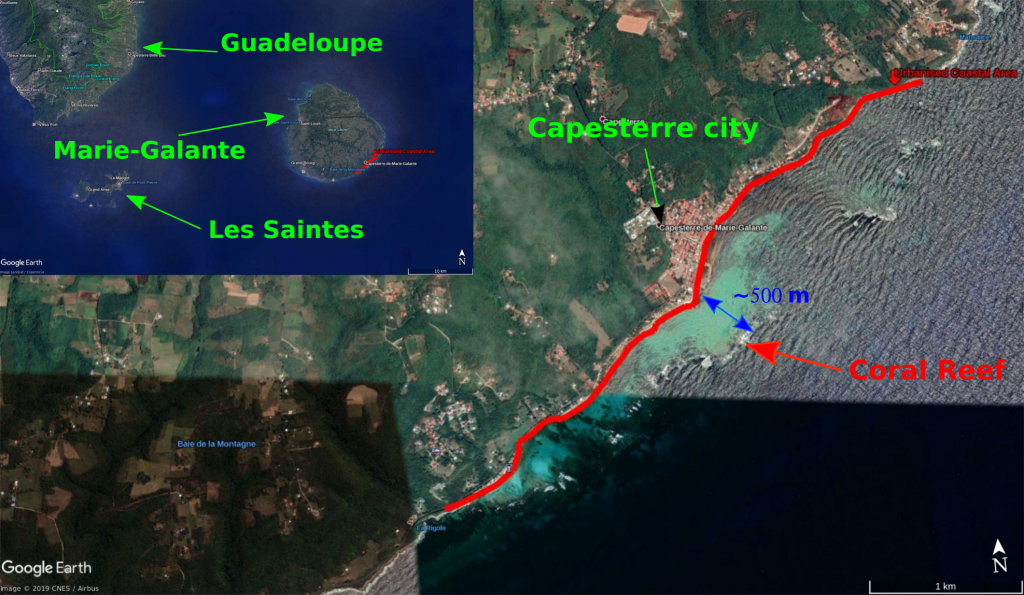
Sargassum arrivals in late July 2019 have always been very common on the east coast of Marie-Galante island. The town of Capesterre is the most impacted by stranding, stagnation and decomposition, due to its direct exposure to Atlantic ocean currents and the trade winds. The coral reef located 500m from the coast line complicates water flow. The shallow waters surrounding the urban coastal strip [see map #1 & #2] remain warm with little cooling by the oceanic masses that are difficult to pass through the coral-drawn channels. The most favourable periods renew water masses of this lagoon intervene during strong swell, where there is large quantity of water penetrate by overflow (breaking waves).
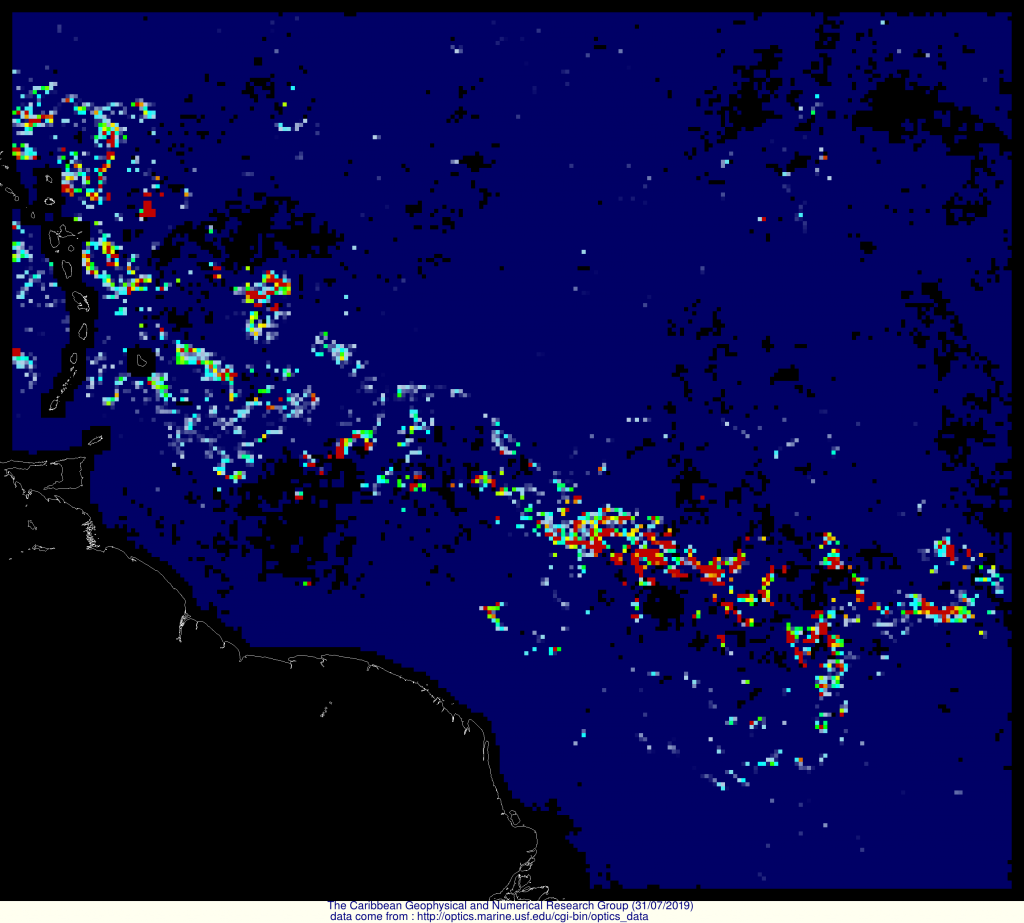
These conditions give waters that are often poorly oxygenated and sensitive to pollution. The presence of a large quantity of organic matter promotes anoxic decomposition (fermentation) and the production of toxic gases such as hydrogen sulphide (H2S), ammonia (NH3) or Thiols. Rainwater discharges and the malfunctioning of the water treatment plants cause eutrophication characterized by the presence of numerous green algae and seasonal pollution. In the case of sargassum stranding, it is essential to quickly collect dead algae in order to limit the risk of atmospheric and aquatic pollution and to avoid exposing the population to H2S or NH3 levels, which is higher than the sub-chronic exposure threshold respectively of 0.02 ppm for H2S and 0.71 ppm for NH3 [HCSP 08/06/2018 ] for more than 15 to 30 days.
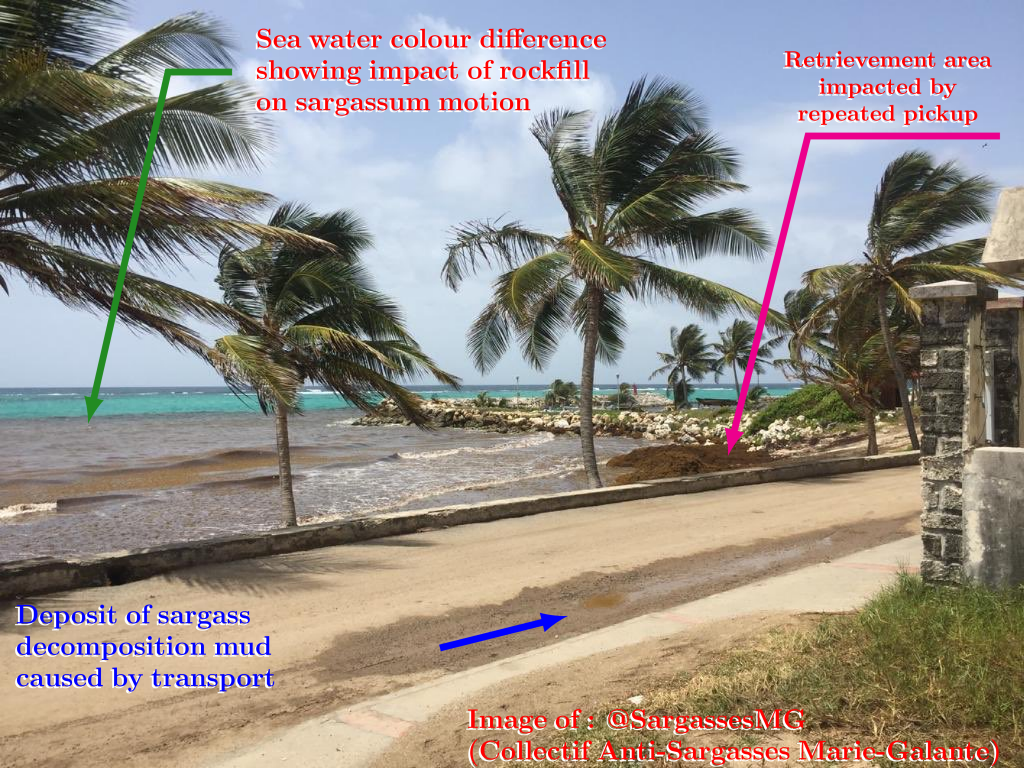
This pickup of algae, although important and urgent, can not be done in bad conditions do anything and without respect the rules. On July 24th, 2019 we had worrying example of bad practices that are going on (see picture 1 and picture 2)
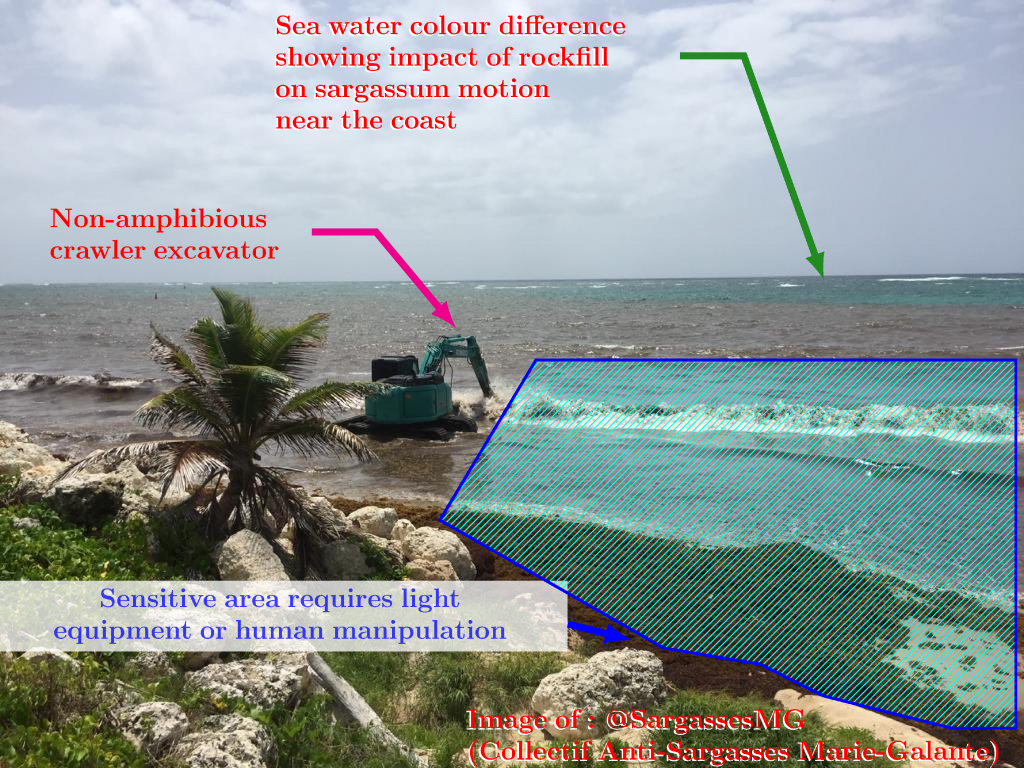
- lack of delimitation of the work area
- lack of signalling of associated risks
- use of unsuitable machinery in hazardous conditions
- Poor choice of pickup locations, etc.
TCGNRG can contribute to the implementation of collection procedures respectful of natural sites, environmental conditions, safety and public and workers health. Do not hesitate to contact our services
